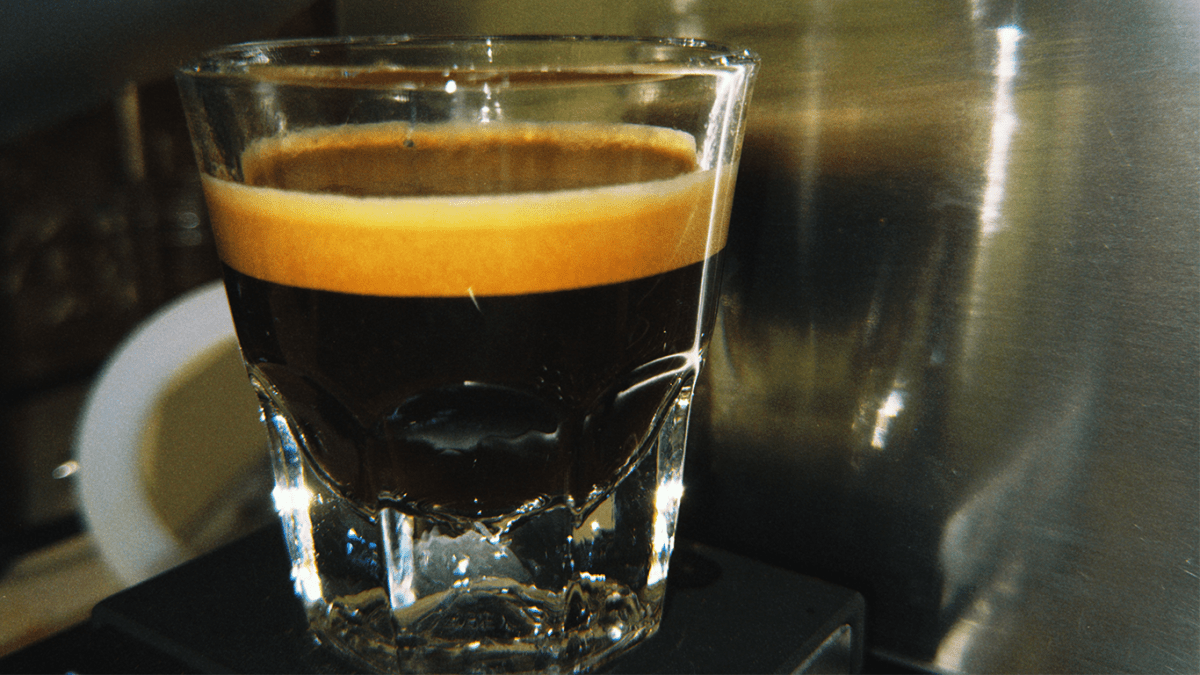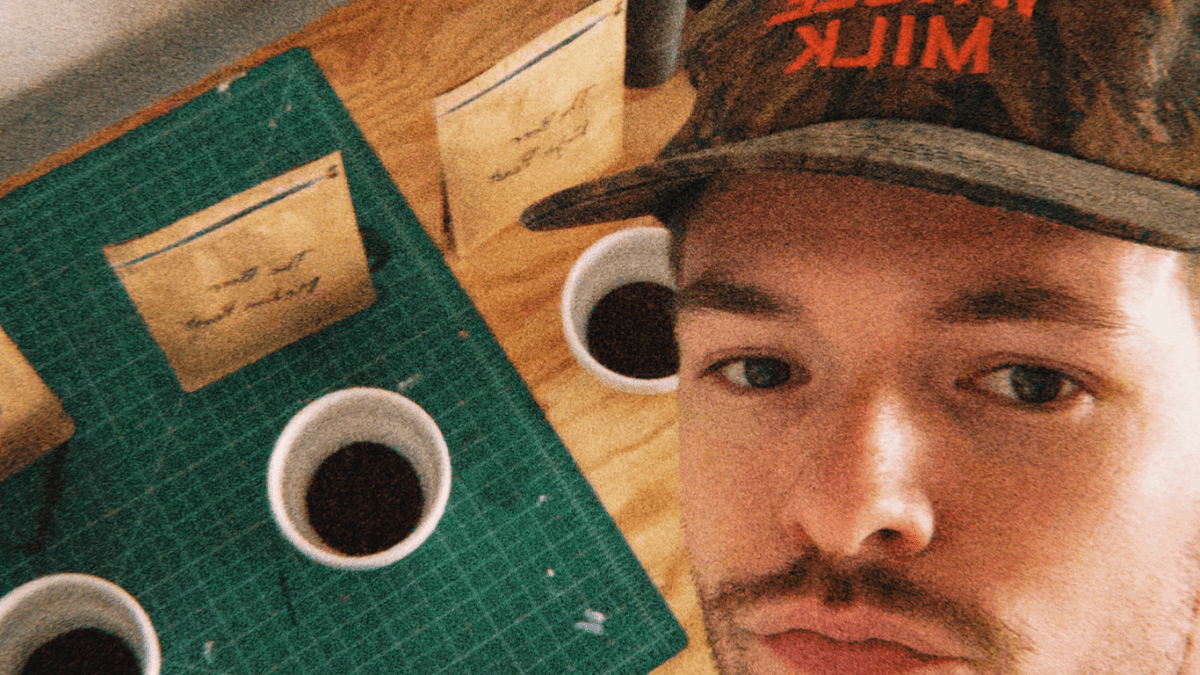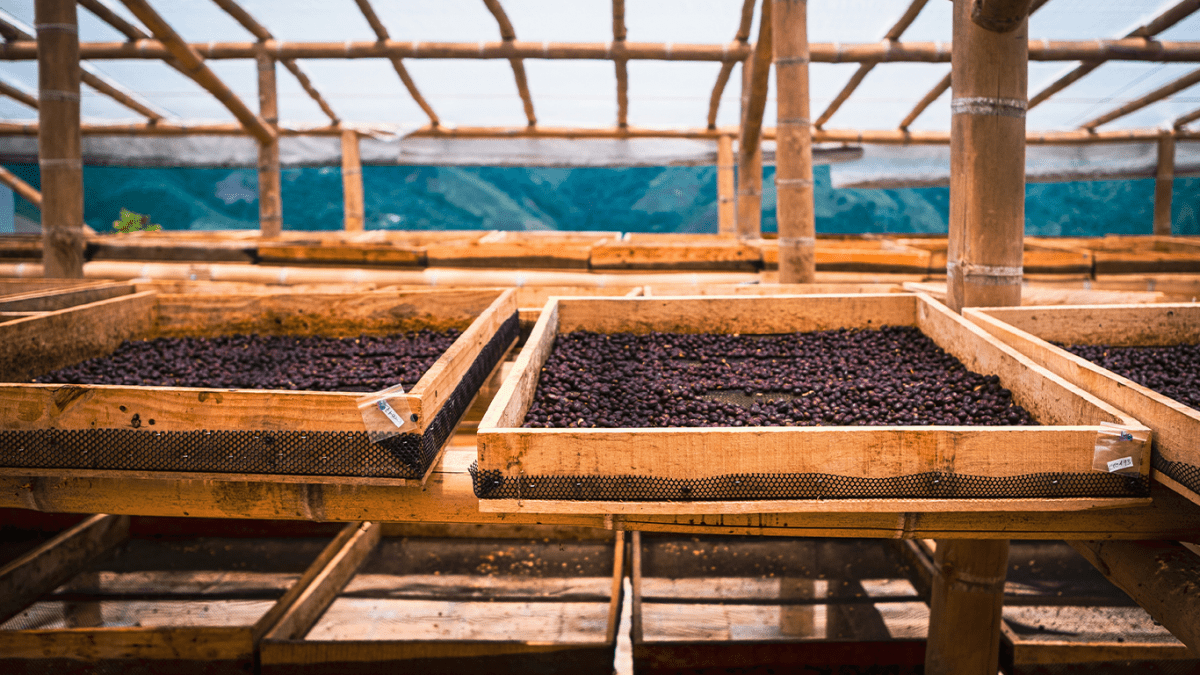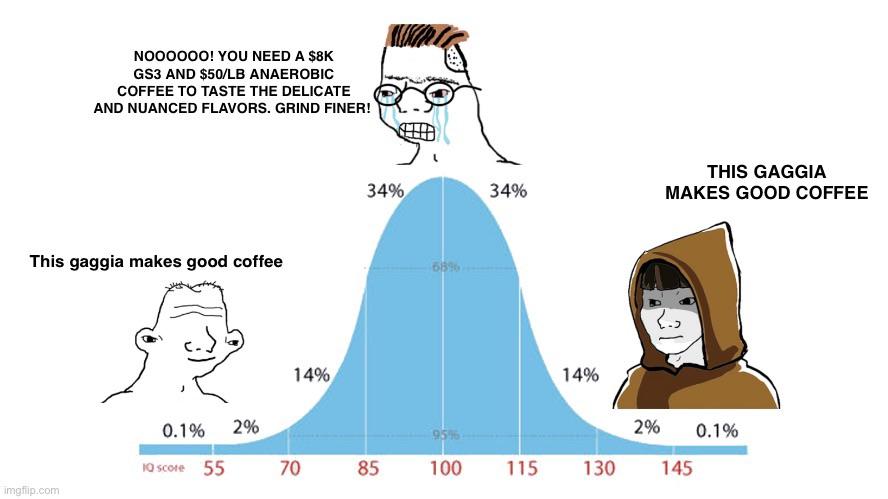DROP #4 SEPTEMBER 5, 2025 @ 12:00 PM EST
Nice Espresso Crema Bro. It Doesn't Mean Anything.

For years, crema has been treated like the holy grail of espresso. If you pull a shot with thick, golden crema, it must be good, right? Nope. Wrong.
The truth is, crema has very little to do with whether your espresso actually tastes good.
Your favorite coffee influencer lied to you.
Crema is mostly gas and oils. It’s a byproduct of extraction, not a marker of quality. Yet, thanks to outdated myths and Instagram barista culture, many coffee lovers still obsess over it.
If you’ve ever taken a sip of a beautifully creamy espresso, only to find it tastes bitter or flat, you already know the truth—crema can be misleading. This article will break down why crema doesn’t determine quality, why people think it does, and what you should actually focus on when pulling a shot.
Table of content
The Origin of the Crema Obsession
The obsession with crema can be traced back to Achille Gaggia, the man who revolutionized espresso in the 1940s. Before Gaggia, espresso machines brewed at lower pressures, producing a thinner, more coffee-like drink. Gaggia’s innovation introduced high-pressure extraction (9 bars), which created the thick, golden crema we associate with espresso today.
But there was a problem. People weren’t used to this foamy layer on their coffee. Some even thought it meant the coffee had gone bad. So, Gaggia rebranded crema as a sign of superior quality, calling it “caffè crema” and marketing it as proof of a properly pulled espresso.
And just like that, crema became the standard—not because it improved taste, but because it looked impressive and helped sell more espresso machines.
Learn more about Achille Gaggia here
Why Crema Does Not Equal Good Espresso
Crema forms when CO₂ gas, trapped in coffee during roasting, is released during high-pressure extraction. It’s an emulsion of gas, coffee oils, and microbubbles. While it looks beautiful, it doesn’t tell you much about taste.
Here's why crema is overrated
- Crema Can Be Bitter - The darker the roast, the more CO₂ and oils it contains, which means crema from a dark roast is often bitter and unpleasant.
- Too Much Crema Can Mean Over-Roasted Coffee - If your espresso is 50% crema, there’s a good chance your beans are stale or roasted too dark.
- Crema Thickness Varies By Bean Type - Some coffees naturally produce more crema than others due to their oil content, but this has nothing to do with quality.
In fact, some of the best-tasting light roast espressos have little to no crema. That’s because lighter roasts contain less CO₂ and fewer oils, meaning a thinner crema—but a much more complex, vibrant flavor in the cup.
Ok, Then What Actually Determines Espresso Quality?
If crema is not a quality indicator, then there must be something...right?
Yes of course!
Here is what actually matters:
- Flavor Balance - A great espresso should have a balance of sweetness, acidity, and bitterness. Crema tells you nothing about this.
- Extraction Quality - Under-extracted espresso tastes sour and weak, while over-extracted espresso is bitter and harsh. A well-extracted shot is rich and layered.
- Texture & Mouthfeel - A good espresso should have a velvety body. Crema can make a shot look creamy, but it doesn’t actually improve texture.
- Freshness of Beans - Freshly roasted beans that have properly degassed produce better espresso. Stale beans can still make thick crema but taste lifeless.
Common Misconceptions About Crema
“If there’s no crema, the espresso is bad.”
Nope. Light roasts, fresh beans, and certain coffee varieties naturally produce less crema, even when the espresso tastes incredible.
“More crema means better espresso.”
More crema often means stale beans, dark roasts, or an over-pressurized machine. None of these contribute to better flavor.
“Crema is what makes espresso creamy.”
Crema is mostly gas, not body. The actual mouthfeel of espresso comes from properly extracted coffee oils and dissolved solids, not the foamy layer on top.
“You should stir or scoop off the crema before drinking.”
This is partially true. Stirring espresso blends the crema into the shot, which can help with balance. Some people prefer skimming off the crema entirely to avoid its bitterness. Try both methods and see what you prefer.
Does crema affect taste?
Not really. While it adds aroma, crema itself is mostly gas and can sometimes be bitter. The real flavor of espresso comes from the liquid beneath the crema.
Why does my espresso have no crema?
Your beans might be too fresh, too light-roasted, or naturally low in oils. None of these are bad things if the espresso tastes good.
Can you have great espresso without crema?
Absolutely. Some of the best espressos have little to no crema, especially those made with high-quality, lightly roasted specialty beans.
Should I stir my espresso?
Yes. Stirring helps mix the crema into the shot, balancing the flavors and preventing that first sip from being overly bitter.
What does good espresso actually look like?
Forget looks. Good espresso tastes balanced—sweet, acidic, and bitter in harmony. That’s the only thing that matters.
Conclusion
It’s time to stop obsessing over crema. It’s not a quality marker, and it doesn’t mean your espresso is good. The coffee industry has spent decades pushing the idea that crema equals quality, but that’s simply not true.
What actually matters is how the espresso tastes. Next time you pull a shot, don’t just look at the crema—pay attention to the flavor, the body, and the balance. That’s how you know if your espresso is good.
Stop Chasing Crema. Start Chasing Good Coffee.
At Dös Coffee Club, we focus on what actually matters in coffee. Our selections aren’t about what looks good in a bottomless portafilter—they’re about flavor, craftsmanship, and quality.
Sign up today and get access to some of the most interesting coffees in the world.






